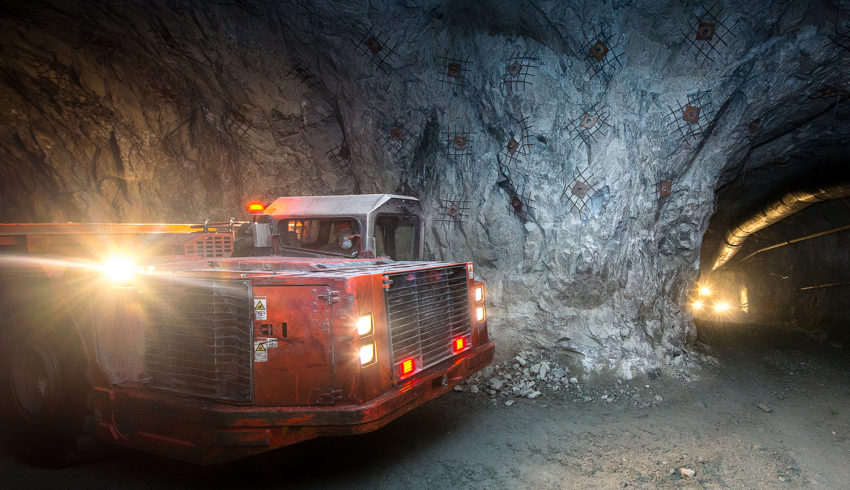Cave Mining 2040
Challenge
The mining industry is shifting towards cave mining and deep exploration drilling as surface orebodies become scarce and discoveries at depth become more common. To remain profitable in the future, it is essential for the industry to focus on effective and efficient ways of accessing orebodies below 500m.
Cave mining offers the potential for high production rates and low operating costs, making it the preferred method of extraction for progressively deeper large orebodies. Despite the long lead time and high capital investment required to establish a caving mine, block, panel, and sublevel caving techniques are currently the only viable underground mining methods to extract large, deep, and lower-grade ore deposits in challenging geological and geotechnical environments.
The industry must prioritize research and development to improve access to deeper orebodies, optimize mining techniques, and mitigate potential risks. By embracing innovation and collaboration, the mining industry can achieve sustainable growth and profitability while minimizing its impact on the environment and communities.
Research
Cave mining has already proven to be a successful method of exploiting ore bodies at established mines around the world, with numerous mine expansions in the pipeline. Given the combination of high demand, high metal prices, and deeper deposits, cave mining is emerging as the mining method of the future. To shape this future, Cave Mining 2040 has been established to tackle the challenges of the industry head-on.
Through consultation with various stakeholders, including mine owners, equipment and technology services, original equipment manufacturers, and organizations with innovative technologies, a range of cave mining challenges have been identified. The Cave Mining 2040 ‘Horizon 1 Project’ has been established, comprising six study areas that will have immediate short-to-mid-term impacts on cave mining methods during the next 10 years and contribute to the overall transformation of cave mining methods.
- Total Deposit Knowledge
The future of cave mining depends on a comprehensive understanding of the ore body, including geological, geotechnical, and hydrogeological characteristics. Total deposit knowledge (TDK) is critical in developing a 3D mining uncertainty model of an ore deposit. By quantifying the key characteristics of the ore body, including those that are not fully measured, TDK research enables more accurate predictions of ore behavior and improves the efficiency and safety of mining operations. - Rapid Cave Establishment Reducing the upfront capital requirement for caving mines is essential to increase the profitability of deep ore deposits.
The cave establishment study area focuses on developing innovative and efficient ways of establishing caving mines that prioritize safety, speed, and cost-effectiveness. By streamlining the cave establishment process, mining companies can reduce the time and cost required to set up caving mines and improve the profitability of their operations. - Mine Design for New and Emerging Technologies
The adoption of new and emerging technologies requires a redesign of the extraction level arrangement to maximize ore recovery and minimize the amount of required horizontal and vertical mining development. The study area focuses on developing new mine layouts, ground support, and roadway conditions that enable the cost-effective implementation of automated production systems. By investing in high-performing, large-scale, lasting infrastructure, mining companies can lower their operational costs throughout the life of the cave. - Macro-Block Design and Sequencing Optimization Mining strategies for caving ore deposits with large footprints can benefit from macro-block design, which considers in situ and induced rock-mass conditions and geological structures while maintaining extraction level stability. By optimizing the macro-block design and sequencing, mining companies can potentially delay the ingress of waste and reduce upfront capital expenditure, leading to more profitable mining operations.
- Cave Front/Cave Back Tracking using Active and Passive Microseismic Data
Knowledge of the cave’s location is critical for both safety and production in cave mining. In order to minimize the risk of catastrophic air blasts resulting from cave back sudden failures, as well as to optimize production by anticipating cave movement towards waste rock, it is important to have an accurate and timely understanding of the cave’s location at all times. Passive microseismic monitoring is currently one of the most useful techniques for cave front tracking.Passive microseismic monitoring works by detecting the seismic waves produced by the movement of the rock mass surrounding the cave. In high-stress environments, the cave front is typically preceded by a cloud of microseismic events as the intact rock above the cave begins to fail. By monitoring this cloud of microseismicity, it is possible to determine the likely location of the cave front, as well as its direction of movement.However, while passive microseismic monitoring is a useful technique, it has limitations in terms of its ability to provide a complete picture of the cave’s location. This technique only informs on the region where microseismicity is occurring, which represents a relatively small volume. In larger caves, this approach falls short significantly, as it ignores factors such as lateral cave growth, location uncertainty, and varying system sensitivity to hard/soft rock conditions. Therefore, future research should focus on improving the accuracy and scope of cave front tracking techniques, such as by improving active microseismic monitoring methods or by use in conjunction with complementary technologies. - Sub-level caving global practice review
The global review provides a detailed analysis and comparison of operational practices, technical aspects, and hazard management techniques across 24 sublevel caving mines (SLCs) worldwide. This benchmarking initiative is the largest of its kind for any underground mining method. The comprehensive reports for each mine and the extensive benchmarking documentation capture the current practices in SLC operations worldwide, making them an invaluable reference and guideline for practitioners and future mining studies. The key takeaways from the project indicate that most SLC mines excel in at least one aspect of mining, such as drill and blast or mine development. Additionally, every mine has opportunities to learn from other SLCs, regardless of its age or level of technological advancement.
Benefits
Cave Mining 2040 is a forward-thinking initiative that seeks to revolutionize the current practices of cave mining. By leveraging new technologies and innovative approaches, the goal is to reduce lead times and capital investment, while simultaneously enhancing safety, production, profitability, and environmental sustainability. Through collaboration and the sharing of knowledge and best practices, Cave Mining 2040 aims to transform the mining industry and create a more sustainable future for all. By investing in research and development, testing new methods, and embracing change, the initiative is paving the way for a more prosperous and responsible mining industry that benefits not only the industry itself, but also the communities and environment impacted by mining operations.
Status
The Cave Mining 2040 initiative has successfully completed its Horizon 1 phase and has now moved on to the Horizon 2 phase. During the Horizon 1 phase, the Cave Mining 2040 initiative successfully completed several important projects that have made a significant contribution to mining industry knowledge and practice. The initiative is now embarking on its Horizon 2 phase and is actively seeking new collaborators and partners to join its existing members. If you are interested in joining the Cave Mining 2040 initiative or collaborating on one of its projects, please contact us at info@mining3.com.















